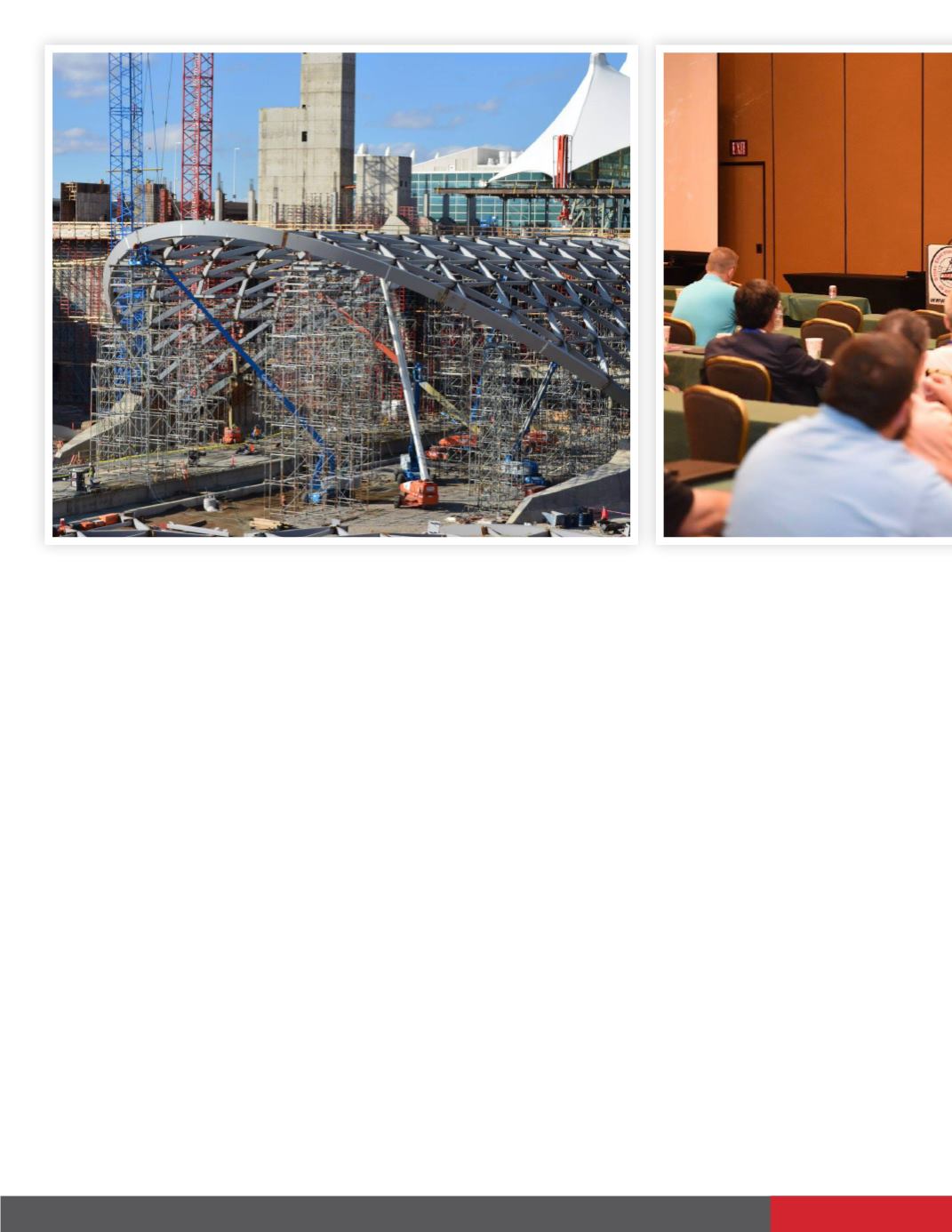
100 Business View - November 2015
In 2014, SEAA announced that its Ironworker Apprentice-
ship Program had been approved by the U.S. Department
of Labor. The approval provides a template for SEAA mem-
ber companies to establish Registered Apprenticeship pro-
grams throughout the country. Programs like these benefit
SEAA members as a whole. Erectors can gain certification,
and SEAA keeps an online record of course completion
that workers say is a “big deal.”
Advocacy is performed on an individual basis. “If an is-
sue comes up we will step in, but we’re not a big lobbyist
group,” Underhill said. “For instance, a lot of our members
own cranes and are involved in certification for crane oper-
ators. They worry about what the government will require
them to do in the future. We take an active part in making
recommendations and helping with the wording of regula-
tions, so they are more easily understood. Several of our
members are on AISC committees, so if an issue arises
that might affect erectors, they can contact us for input on
a particular situation.”
FAQ: What is the difference between a steel worker and an
ironworker?
- Steel workers work in a plant that produces the steel.
- Ironworkers work in the field; hanging steel, applying
bolts, welding, etc.
Steel erectors are classed as ironworkers. The Dept. of La-
bor classification lists many steel erector businesses, but
some are small and work only at a certain facility. SEAA
members are typically larger entities that do commercial,
industrial and municipal projects.
Revenue for SEAA comes primarily from membership
dues, which only recently increased after 15 years at the
same rate. Additional funds come from conventions, rev-
enue sharing with Connector magazine, advertising on the
SEAA website, and sales of training publications.
Staff is minimal, consisting of the Executive Director, an
MANUFACTURING


